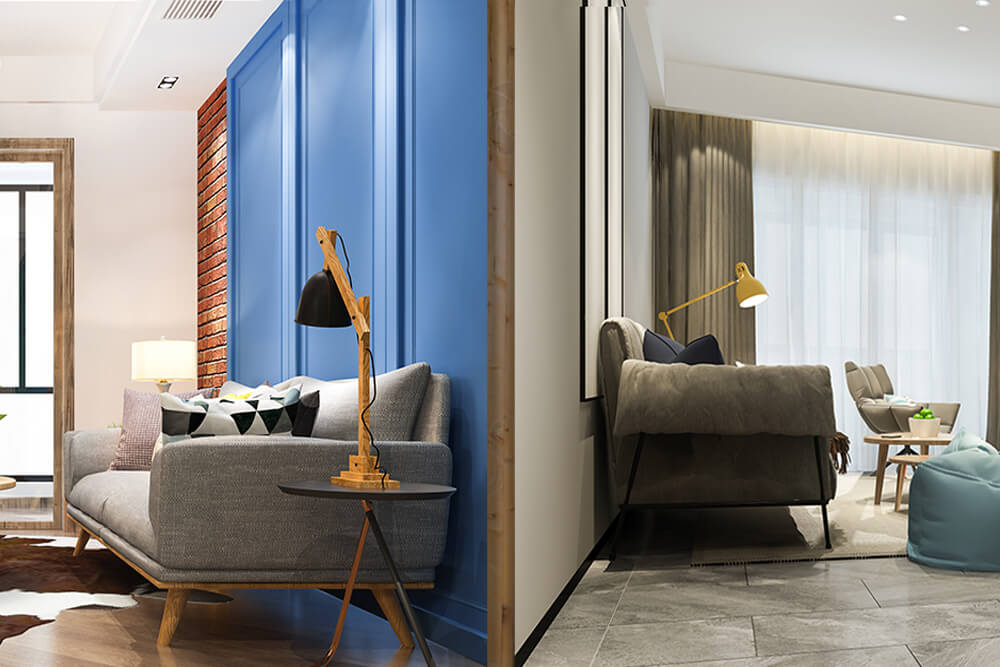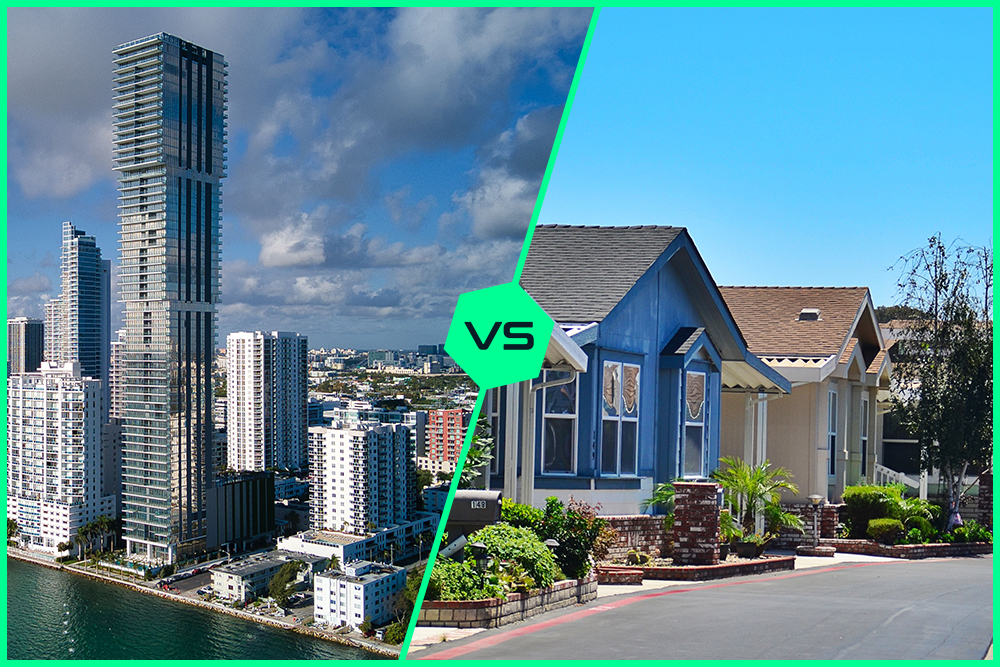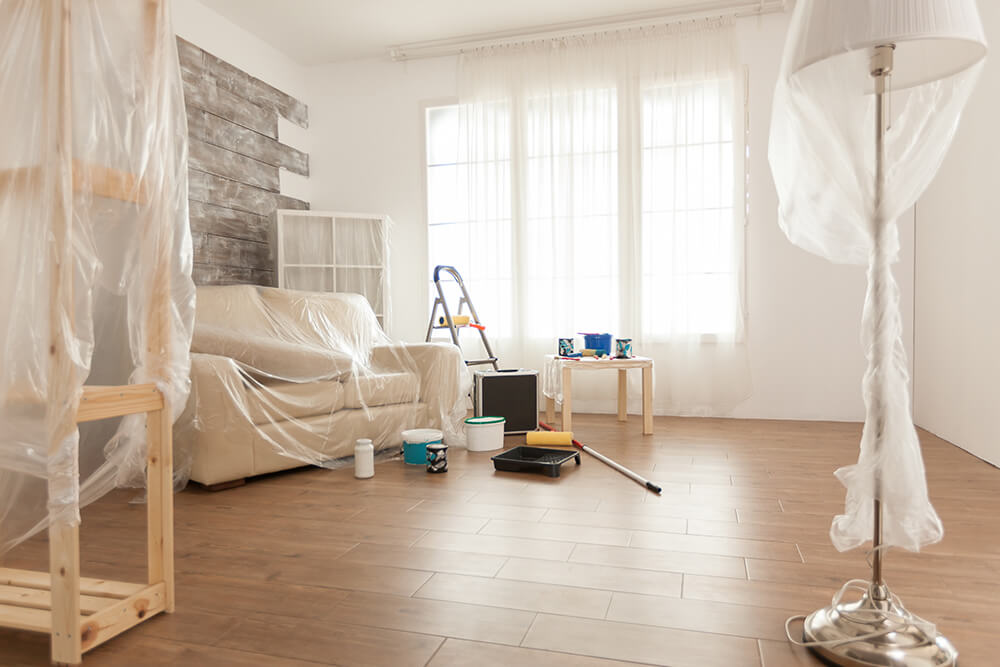Emergency Preparedness: Creating a Safety Plan for Your Home

Emergency Preparedness: Creating a Safety Plan for Your Home When you own a home, being prepared for emergencies is crucial. Unexpected events like hurricanes, fires, or floods can happen at any time, and having a safety plan in place can save lives. Whether you’re a new homeowner or simply want to improve your emergency readiness, this guide will help you create a plan that works for you and your family. How to Create an Emergency Preparedness Plan Understand Your Risks The first step in creating a safety plan is understanding the specific risks in your area. Different regions face different types of emergencies, so it’s important to prepare for the ones that are most likely to affect your home. Natural Disasters: If you live in Florida, you’re probably aware of the risk of hurricanes and floods. Some areas may also experience tornadoes or earthquakes. Fires: House fires can happen anywhere, and they often start unexpectedly due to electrical issues, cooking accidents, or even natural causes like lightning. Health Emergencies: It’s also smart to be prepared for medical emergencies, especially if someone in your family has a condition that may need immediate attention. Create a Family Communication Plan When an emergency happens, it’s easy to feel scared or confused. That’s why it’s important to have a clear communication plan so everyone in your household knows what to do. Emergency Contacts: Make a list of important phone numbers, like local emergency services, hospitals, and family members. Every family member should have this list easily accessible, whether in a phone or printed on paper. Meeting Points: Identify two meeting places: one right outside your home in case of a fire, and one outside your neighborhood in case you can’t return home. Contact Outside the Area: Sometimes local phone lines may not work, but long-distance calls can go through. Identify a relative or friend outside your area who everyone can contact to share information. Plan for Evacuation Evacuations are sometimes necessary during emergencies like hurricanes or large fires. Knowing how to leave your home quickly and safely is an essential part of your emergency plan. Know Your Routes: Learn the fastest ways to get out of your neighborhood and find out which roads are safe during emergencies. Keep maps in your car in case your GPS fails. Pack an Emergency Kit: Your emergency kit should be packed and easy to grab. Include items like: Water and non-perishable food (enough for at least three days) Flashlights, extra batteries, and a portable phone charger First aid supplies, including any prescription medications Important documents (ID, insurance papers) in a waterproof bag Cash, in case ATMs are down Blankets, extra clothing, and hygiene products For families with pets, don’t forget to pack pet food, extra water, and any medications your pets may need. Prepare Your Home Your home itself plays an important role in keeping your family safe during emergencies. Taking steps to protect your home can prevent damage and reduce risks. Install Smoke and Carbon Monoxide Detectors: Make sure you have working smoke detectors on every floor of your home, especially in sleeping areas. Check the batteries regularly. Carbon monoxide detectors are also essential, as this gas is deadly but hard to detect without proper equipment. Secure Windows and Doors: Storm shutters can protect your windows during a hurricane. If you don’t have storm shutters, consider covering windows with plywood. Make sure all doors and windows are securely locked to prevent damage or unauthorized entry during an evacuation. Know How to Shut Off Utilities: In case of an emergency like a gas leak or flooding, you may need to shut off your gas, water, or electricity. Learn where the shutoff valves are in your home and practice turning them off with your family members. Practice Your Plan Creating an emergency plan is a great start, but practicing it is just as important. A plan that looks good on paper may not be as effective when put into action. Regular practice will help everyone in your family feel confident and know exactly what to do. Run Drills: Practice different types of emergency drills, such as fire evacuations or flood evacuations. Time how long it takes to leave the house and make sure everyone knows their role. Review the Plan Regularly: Your family’s needs may change over time, so it’s important to review and update your plan regularly. For example, as your children grow older, they may take on different responsibilities during an emergency. Stay Informed Finally, staying informed is essential for emergency preparedness. Keep track of weather alerts, local emergency broadcasts, and news updates, especially during hurricane season. Many communities have emergency alert systems you can sign up for via text or email. Being aware of what’s happening can give you valuable time to prepare or evacuate if necessary. Emergency preparedness is all about planning ahead to protect your family, your home, and your peace of mind. By understanding your risks, creating a communication plan, preparing your home, and practicing regularly, you’ll be ready for whatever comes your way. Remember, the best time to prepare is before an emergency happens. If you are looking for housing projects, don’t forget to check out our portfolio. At Alphaville, we offer a variety of townhouse projects designed with your lifestyle in mind. Whether you’re a first-time buyer or looking to upgrade, we’re here to assist you every step of the way, from selecting the perfect townhouse to guiding you through the purchasing process and securing your mortgage.
Understanding Home Loans: Tips for Securing the Best Mortgage Rates

Understanding Home Loans: Tips for Securing the Best Mortgage Rates Buying your first home is an exciting journey, but it’s important to understand the home loan process to make informed decisions. Whether you’re a first-time buyer or looking to move into a new property, securing the best mortgage rate is crucial. This guide will walk you through the basics of home loans and provide practical tips for finding the best rates What Is a Home Loan? A home loan, or mortgage, is a financial agreement between a borrower and a lender. The lender provides funds to purchase a home, and in return, the borrower agrees to repay the loan over time, usually with interest. In Florida, like in the rest of the U.S., the terms of your mortgage can greatly impact your financial situation. Types of Home Loans In Florida, there are several types of home loans available, each with its own features: Conventional Loans: These are not backed by the government and usually require a higher credit score and a larger down payment. They can be fixed or adjustable. FHA Loans: Insured by the Federal Housing Administration, FHA loans are designed for first-time homebuyers or those with lower credit scores. They typically require a smaller down payment. VA Loans: Available to veterans, active-duty service members, and eligible spouses, VA loans are backed by the Department of Veterans Affairs and often come with no down payment. USDA Loans: These are designed for rural property buyers and are backed by the U.S. Department of Agriculture. They offer low interest rates and no down payment. Understanding these loan types can help you choose the one that best fits your needs and financial situation. Tips for Securing the Best Mortgage Rates Now that you have a basic understanding of home loans, let’s look at some strategies to help you secure the best mortgage rates in Florida. Know Your Credit Score and Improve It Your credit score is a key factor that lenders consider when determining your mortgage rate. A higher score often leads to lower interest rates, which can save you money over the life of your loan. To improve your credit score: Pay bills on time: Consistent, on-time payments can significantly boost your score. Reduce debt: Paying down credit card balances and other debts can improve your credit utilization ratio. Check for errors: Review your credit report for any inaccuracies and dispute them if necessary. In Florida, where the housing market can be competitive, having a strong credit score gives you a better chance of securing a favorable mortgage rate. Save for a Larger Down Payment In Florida, the average home prices can vary widely depending on the area. Regardless, a larger down payment can positively impact your mortgage rate. Lenders often offer lower rates to borrowers who can pay 20% or more upfront because it reduces their risk. Compare Offers from Multiple Lenders Mortgage rates can differ from one lender to another, so it’s essential to shop around. When comparing mortgage offers, consider the following: Interest rates: Look at both the advertised rate and the annual percentage rate (APR), which includes fees. Loan terms: Consider whether a 15-year or 30-year mortgage makes more sense for your budget. Closing costs: These can vary by lender and should be factored into your decision. Securing the best mortgage rate in Florida requires a good understanding of home loans and a strategic approach. By knowing your credit score, saving for a larger down payment, shopping around for the best offers, and carefully timing your rate lock, you can position yourself for financial success. If you are looking for housing projects, don’t forget to check out our portfolio. At Alphaville, we offer a variety of townhouse projects designed with your lifestyle in mind. Whether you’re a first-time buyer or looking to upgrade, we’re here to assist you every step of the way, from selecting the perfect townhouse to guiding you through the purchasing process and securing your mortgage.
Color Psychology: Transform Your Townhouse Interior with the Perfect Palette

Choosing the right colors for the interior of your townhouse isn’t just about picking shades that look good. Colors can affect your mood, energy levels, and even how you interact with your space. Understanding the psychology behind color can help you create a home that feels just right for you and your family. What Is Color Psychology? Color psychology is the study of how colors affect human behavior and emotions. Different colors can evoke different feelings and reactions. For example, some colors can make you feel calm and relaxed, while others can make you feel energized and excited. By understanding these effects, you can choose colors that create the right atmosphere in each room of your townhouse. The Impact of Different Colors Blue: The Calming ColorBlue is known for its calming and soothing effects. It’s a great choice for bedrooms and bathrooms where relaxation is key. Light blues can make a room feel more spacious and airy, while darker blues can create a cozy and intimate atmosphere. Yellow: The Cheerful ColorYellow is bright and cheerful, bringing a sense of happiness and warmth to any room. It’s perfect for kitchens and dining areas where you want to create a lively and welcoming environment. However, too much yellow can be overwhelming, so it’s best used as an accent color. Green: The Refreshing ColorGreen represents nature and tranquility. It’s a versatile color that works well in almost any room. Light greens can make a space feel fresh and peaceful, while darker greens add a touch of sophistication and stability. Red: The Energizing ColorRed is bold and stimulating, making it ideal for spaces where you want to encourage activity and excitement, like living rooms or home gyms. Because red can be intense, it’s often best used as an accent rather than the main color. Neutral Colors: The Flexible ChoicesNeutrals like white, beige, and gray are timeless and versatile. They provide a clean, modern look and can be paired with almost any other color. Neutrals are great for creating a balanced and harmonious space, and they serve as a perfect backdrop for bolder accent colors. Tips for Choosing the Perfect Interior Palette Consider the Room’s PurposeThink about how you use each room and what kind of mood you want to create. For example, you might want a calming color in the bedroom and a more energizing color in the kitchen. Use Color to Highlight FeaturesUse color to draw attention to architectural features or favorite pieces of furniture. An accent wall in a bold color can make a big statement without overwhelming the room. Test Before You CommitBefore you paint an entire room, test the color on a small section of the wall. See how it looks in different lighting throughout the day to make sure it’s the right choice. Balance Bold and Neutral ColorsToo much of a bold color can be overwhelming, but mixing bold colors with neutrals can create a balanced and appealing look. Use neutrals as a base and add pops of color with accessories and accents. Don’t Forget About LightingThe way a color looks can change depending on the lighting. Natural light will show the true color, while artificial lighting can change its appearance. Consider the lighting in your townhouse when choosing colors. By understanding the psychology of color, you can create a home that feels comfortable, inviting, and uniquely yours. Remember to consider the purpose of each room, test colors before committing, and balance bold and neutral shades. With these tips, you’ll be well on your way to transforming your townhouse into a beautiful and harmonious space. On the other hand, if you are looking for housing projects, don’t forget to check out our portfolio. At Alphaville, we offer a variety of townhouse projects designed with your lifestyle in mind. Whether you’re a first-time buyer or looking to upgrade, we’re here to assist you every step of the way, from selecting the perfect townhouse to guiding you through the purchasing process.
Understanding HOA Rules and Their Importance in Townhouse Communities

When considering a move into a townhouse community, one crucial aspect to consider is the Homeowners Association (HOA). The rules set by an HOA can significantly impact your lifestyle and property rights. In this blog, we’ll explore what HOA rules typically cover and why they are vital for maintaining harmony and property value in townhouse developments. WHAT IS AN HOA? An HOA is an organization that governs a residential community, which could be a condominium, a single-family home development, or a townhouse community. It is usually established by the property developer with a set of rules (known as covenants, conditions, and restrictions, or CC&Rs) designed to maintain a certain standard and order within the community. COMMON HOA RULES: HOA rules can vary significantly between communities, but they generally aim to maintain a certain standard of living and protect the property values for all residents. Here’s a closer look at what these rules typically cover: Property Appearance: HOAs play a critical role in keeping the community visually appealing. They set standards for exterior house colors, dictate landscaping requirements, and even specify rules for holiday decorations. These guidelines ensure that the aesthetic integrity of the community is maintained, preventing any one property from negatively affecting the overall look and feel of the area. Parking: Effective management of parking spaces is essential, especially in communities with limited space. HOAs restrict the types of vehicles that can be parked within the community to avoid commercial vehicles clogging residential areas. They also ensure that driveways and streets are not obstructed, which helps in maintaining clear access for all residents and emergency vehicles. Pets: To accommodate pet owners while ensuring comfort for all residents, HOAs often set rules regarding the number, size, and breed of pets allowed. These rules can include restrictions on keeping potentially dangerous breeds, limits on the total number of pets per household, and requirements for pet behavior and waste management. Noise Control: Quiet hours are established to maintain a peaceful environment within the community. These rules are particularly important in densely built areas such as townhouse complexes, where noise can easily travel between units. Enforcing quiet hours helps ensure that all residents can enjoy a calm and undisturbed living environment. Amenities Use: HOAs also regulate how residents can use community amenities like pools, clubhouses, and fitness centers. These guidelines are designed to ensure that these facilities are kept in good condition and are enjoyable for all residents. Rules might include hours of operation, guest policies, and proper conduct to prevent misuse and maintain the facilities for everyone’s benefit. THE IMPORTANCE OF HOA RULES: These rules are critical for several reasons: Keeping Property Values High: HOAs make sure all homes look good and are well-maintained. This helps keep the whole neighborhood attractive and can even make house prices go up. This is good for homeowners because it makes their investment worth more. Reducing Conflicts: Sometimes neighbors argue over things like where property lines are, loud noises, or how properties are used. HOAs help solve these problems by using clear rules that everyone agreed to follow when they moved in. This helps everyone get along better. Making Life Easier: HOAs do more than just enforce rules. They also provide services that make living in the community nicer and easier, such as taking out the trash, taking care of gardens and yards, and looking after shared spaces like parks and pools. This means homeowners have fewer chores to worry about. Legal Power: HOAs can legally make people follow the rules by charging fines or taking other actions if needed. This ensures that everyone in the community follows the rules, which helps keep the neighborhood a nice place to live. Encouraging Community Involvement: HOAs involve residents in decisions about the neighborhood. This can be through voting on important issues or even serving on the HOA board. This helps everyone feel part of the community and makes sure the rules reflect what residents want and need. Handling Money Wisely: HOAs also take care of the neighborhood’s money. They collect fees that pay for things like repairs and improvements in the community. Good management of this money ensures the neighborhood can afford to keep everything in good shape and remain a great place to live. LIVING WITH AN HOA: While some may view HOA rules as restrictive, many residents appreciate the benefits these rules provide. They protect the aesthetic value of the community and manage resources and amenities that individual homeowners would find costly and difficult to maintain on their own. HOAs are instrumental in maintaining the quality and lifestyle of townhouse communities. Before buying into a community, it’s vital to understand and agree with its HOA rules. These regulations help ensure that every resident enjoys a quality living environment and sees their investment protected. At Alphaville, we understand the unique needs of townhouse living. That’s why we offer a variety of townhouse projects designed with your lifestyle in mind. Whether you’re a first-time buyer or looking to upgrade, we’re here to assist you every step of the way, from selecting the perfect townhouse to guiding you through the purchasing process.
Simple Maintenance Tips for Townhouse Shared Walls

Living in a townhouse comes with its own set of unique characteristics, especially when it comes to shared walls. These walls are pivotal for ensuring privacy and reducing noise between units. Here’s an accessible guide with easy tips every townhouse owner can follow to maintain and care for shared walls, enhancing your living experience. Maintenance Checklist for Townhouse Shared Walls From routine inspections to proactive maintenance, these tips will help you address common issues before they escalate, ensuring your townhouse remains a comfortable and peaceful place to live. 1. Quick Visual Inspections: Make a routine of doing a quick visual check of your shared walls whenever you clean the room or rearrange furniture. Look for any new cracks, discoloration, or signs of dampness. This regular check can become part of your normal household routine, making it less of a chore and more of a habit. 2. Easy Soundproofing Hacks: For an easy soundproofing solution, consider adding thick, plush area rugs or wall hangings. These can absorb sound with minimal effort and expense. Additionally, strategically placing furniture like bookcases against shared walls can help block noise. 3. Seal and Insulate Windows and Doors: Check the seals around any doors and windows that are set into shared walls. Weather-stripping or caulking gaps can prevent drafts and reduce sound transmission, and these are simple tasks you can do yourself without hiring a professional. 4. DIY Moisture Checks: Keep an eye out for potential moisture sources. After heavy rain, check any shared walls that are exterior-facing for wet spots or leaks. Early detection of moisture can prevent mold and structural damage. A simple touch test can be effective—walls shouldn’t feel damp or cold. 5. Neighborly Coordination for Exterior Checks: Coordinate with your neighbor to inspect the exterior side of the shared walls periodically. Look for cracks, peeling paint, or other signs of wear and tear that could affect the interior. It’s easier and often more effective when both parties are involved. 6. Minimize Wall Penetrations: When hanging pictures or shelves, use the minimum number of holes necessary, and opt for non-invasive hanging methods when possible. Adhesive hooks and strips can hold lightweight items without damaging the wall. 7. Address Noise at Its Source: If noise through shared walls is an issue, address the source when possible. Place noisy appliances away from shared walls, or use anti-vibration pads under washing machines and dryers to reduce noise transmission. 8. Regular Painting and Cleaning: Keep your shared walls looking fresh and clean by painting them regularly and wiping away any marks or stains. This not only maintains the aesthetic appeal but can also protect the surface from damage over time. Maintaining the shared walls of your townhouse not only ensures the longevity of your property but also enhances your daily living experience. Regular checks, simple fixes, and effective communication with your neighbors can prevent common problems and foster a more peaceful, comfortable community. At Alphaville, we understand the unique needs of townhouse living. That’s why we offer a variety of townhouse projects designed with your lifestyle in mind. Whether you’re a first-time buyer or looking to upgrade, we’re here to assist you every step of the way, from selecting the perfect townhouse to guiding you through the purchasing process.
Urban vs Suburban: How People are Choosing Their Homes

Lately, there’s been a big shift in where people want to live. Some are drawn to the excitement and convenience of city life, while others prefer the peace and space found in the suburbs. This change in preference has brought about interesting discussions on what makes a place truly feel like home. The Buzz of Urban Life Maintaining the shared walls of your townhouse not only ensures the longevity of your property but also enhances your daily living experience. Regular checks, simple fixes, and effective communication with your neighbors can prevent common problems and foster a more peaceful, comfortable community. At Alphaville, we understand the unique needs of townhouse living. That’s why we offer a variety of townhouse projects designed with your lifestyle in mind. Whether you’re a first-time buyer or looking to upgrade, we’re here to assist you every step of the way, from selecting the perfect townhouse to guiding you through the purchasing process. The Appeal of the Suburbs On the other hand, the suburbs offer a different kind of charm. Here, you can find more space, quieter streets, and a slower pace of life. Suburban homes often come with bigger yards and more room for families to grow. Safety and quality education are also big draws, with suburban areas typically boasting excellent schools. The suburbs are not just about more space; they’re about creating a personal oasis where families can foster connections with neighbors, engage in community events, and enjoy a sense of security and belonging that can be hard to find in the fast-paced city. Making the Choice: Aligning Location with Lifestyle Choosing between urban and suburban living is a deeply personal decision that hinges on lifestyle preferences, career considerations, and family needs. Here are a few questions to guide this decision: What does your daily life look like? Consider your commute, work location, and daily routines. What amenities are important to you? Think about access to parks, schools, shopping, and entertainment. How do you value community? Reflect on your desire for privacy versus a close-knit community feel. What are your long-term goals? Consider future family plans, career growth, and lifestyle changes. Finding the Right Balance As preferences continue to evolve, the idea of the perfect home shifts as well. Whether it’s the bustling streets of the city or the wide-open spaces of the suburbs, the goal is the same: to find a place that not just meets your needs, but also feels like a true home. Moreover, environmental sustainability has become a crucial factor for many. Urban dwellers often have access to public transportation and green buildings, reducing their carbon footprint. Conversely, suburban homes offer the possibility of larger green spaces, home gardens, and solar panels, appealing to those looking to lead a more sustainable lifestyle. Choosing between city and suburban living isn’t just about the physical space. It’s about considering what kind of life you want to lead and what environment will best support that vision. Whether you lean towards the energy of the city or the calm of the suburbs, the most important factor is finding a place where you can be happy and live your best life. Remember, Alphaville offers a variety of projects in different areas of the city, ensuring you have the flexibility to choose a home that fits your lifestyle. We’re here to provide the advice and support you need to make the best decision for you and your family.
5 Tips for Maximizing Spaces in Your Townhouse

If you live in a townhouse, you know that space can sometimes be a challenge. Townhouses often offer a more compact living arrangement compared to single-family homes, and making the most of every square foot is essential. But fear not! We’ve got some easy-to-follow tips to help you maximize the space in your townhouse and make it feel roomier. Maximizing Spaces: Clever Hacks for Your Townhouse Let’s dive into some clever hacks that can make a big difference in your townhouse: #1: Say Goodbye to Clutter One of the most significant obstacles to having a spacious townhouse is clutter. It’s time to declutter your living space! Take a critical look at your belongings and decide what you really need and what you can do without. Donate or sell items you no longer use or love. Clearing out unnecessary items will instantly free up more space and create a cleaner, more organized environment. #2: Furniture That Does More Multi-functional furniture is your best friend when it comes to maximizing space in a townhouse. Look for pieces that serve more than one purpose. For example, consider a sofa that can turn into a bed for guests or a coffee table with hidden storage compartments. These types of furniture not only save space but also make your townhouse more versatile and adaptable to different needs. #3: Use Your Walls Don’t forget about your walls! They are valuable real estate in a townhouse. Install shelves and hooks to keep things off the floor and utilize vertical space. Wall-mounted storage can hold books, decorative items, plants, or even kitchen utensils, freeing up precious space elsewhere. Floating shelves and wall-mounted cabinets can add both functionality and style to your townhouse. #4: Create Divisions in Your Living Area Open floor plans are common in townhouses, and while they can create a sense of openness, they may lack defined spaces for different activities. To address this, consider creating divisions between areas. You don’t need to build walls – use room dividers creatively. Curtains, bookshelves, decorative screens, or even strategically placed furniture can be used to separate your living, dining, and workspace areas. These dividers add privacy and help define each space’s purpose. #5: Play with Colors and Mirrors The color palette you choose for your townhouse can significantly impact how spacious it feels. Light colors, such as whites, soft blues, and pastels, can make rooms feel more open and airy. Lighter tones reflect natural light better, creating an illusion of space. Additionally, incorporating mirrors into your decor can work wonders. Mirrors reflect light and create depth in a room, making it seem larger than it is. Consider placing mirrors strategically to maximize their impact. By applying these practical tips, you can transform your townhouse into a more spacious and comfortable living space. Don’t let limited square footage hold you back from enjoying your home to the fullest. With a little creativity and some thoughtful organization, you can make the most of every inch and create a townhouse that feels open, inviting, and functional.
The Digital Evolution: How Tech is Revolutionizing Real Estate

In recent years, the Real Estate market in the United States has undergone a significant transformation, driven by advances in technology and financial innovation. This digital evolution is reshaping how real estate transactions are conducted, leading to increased efficiency, transparency, and accessibility for all.. Traditional Methods vs. Technological Impact Traditionally, real estate transactions have involved in-person meetings, paper-based contracts, and extensive documentation. These practices often led to time-consuming processes, prone to errors and delays. In contrast, the past decade has seen technology catalyzing a major shift in the industry. The Transformational Power of Technology Technology has infiltrated every facet of human life, and the real estate sector is no exception. The advent of online listing and search tools has revolutionized the buying and selling of properties, providing a more open, transparent, and practical approach. Online Property Listings and SearchesOnline listings have revolutionized the real estate market by offering unparalleled convenience. Buyers can now easily browse properties that match their criteria from home, significantly saving time and effort. Sellers benefit from this as well, gaining increased exposure to a global audience of potential buyers. Virtual Property ToursLeveraging technologies like 3D modeling, virtual property tours allow buyers to remotely explore properties in a realistic virtual environment. These tours provide a more immersive experience compared to traditional photos or videos, helping buyers better visualize their potential new homes. Automated Valuation Models (AVMs)AVMs use statistical algorithms to estimate property values based on various factors, including past transactions, location, and property type. They offer quick, cost-effective valuations and can highlight potential issues like inaccurate tax assessments or zoning violations. The Role of AI and Machine LearningArtificial Intelligence (AI) and Machine Learning (ML) are becoming increasingly crucial in analyzing real estate trends and predicting market dynamics. These technologies aid in identifying investment opportunities, understanding demographic shifts, and providing personalized recommendations to both buyers and sellers. Green Technology in Real EstateThe integration of green technology within real estate offers both environmental and economic benefits. Innovations like energy-efficient appliances, smart home systems, and sustainable building materials are gaining popularity, enhancing property values, and appealing to eco-conscious buyers. The Future of Technology in Real Estate The rise of smart cities, integrating the Internet of Things (IoT) and big data, will create more efficient and sustainable living environments. Also, fully automated homes with advanced home automation systems will redefine convenience and energy efficiency. These advancements suggest an exciting, innovative future for the real estate industry.–The digital evolution in real estate marks a significant shift from traditional methods to a tech-driven approach, enhancing efficiency, transparency, and accessibility. With advancements like online listings, virtual tours, and AI, coupled with the promising future of smart cities and sustainable technologies, the industry is not just evolving—it’s being revolutionarily redefined.
Pet-Friendly Living in a Townhouse: Tips and Guidelines

If you’re living in a townhouse with a pet, or are planning to, you might wonder how to make it work smoothly. Living in a townhouse means being close to your neighbors and sharing common spaces, which can be a bit challenging for pet owners. But don’t worry! In this guide, we’ll share some easy and practical tips on how to enjoy living in a townhouse with your furry friend. . How to Live in a Townhome with Pets? Living with pets in a townhome isn’t just about enjoying their company; it’s also about making sure they fit well into the townhome environment. Here are some key guidelines to help you and your pets live happily in a townhouse setting: Understand and Respect Space ConstraintsTownhomes often have limited space compared to detached houses. It’s important to create a dedicated space for your pet that doesn’t intrude into common areas used by neighbors. This could be a cozy corner inside your home for their bed and toys. For larger pets, consider how they will move around without causing disturbances. Regular Exercise and Outdoor TimePets, especially dogs, need regular exercise to stay healthy and happy. Since townhomes might not have large yards, plan daily walks or visits to a nearby park. This routine not only keeps your pet fit but also helps prevent behavior issues that can arise from pent-up energy. Noise ManagementIn a townhome, walls can be thin, and sound travels easily. Train your pets to minimize unnecessary noise. This might mean teaching your dog not to bark at every noise or keeping nocturnal pets like hamsters in a part of the house where they won’t disturb sleeping neighbors. Pet-Proofing Your HomePet-proofing is crucial in a townhome. Secure any loose wires or potentially dangerous items to prevent accidents. Also, ensure that balconies or shared outdoor spaces are safe and won’t allow pets to wander off or get into unsafe areas. Cleanliness is KeyMaintaining cleanliness is vital. This includes regular grooming of your pets to reduce shedding and keeping your unit and any shared spaces free of pet waste. Many townhome communities have specific rules about cleaning up after pets in common areas — make sure to follow them. Building Positive Relationships with NeighborsIntroducing your pet to your neighbors can help foster a sense of community and understanding. If your pet is comfortable with others, this can also help alleviate any concerns your neighbors might have. Handling EmergenciesKnow the location of the nearest vet and have a plan for emergencies. This includes understanding how to quickly and safely evacuate your pet if needed. Respect Community RulesMost townhome communities have specific rules regarding pets. These can include leash laws, noise ordinances, and designated areas for pets. Familiarize yourself with these rules and adhere to them to avoid conflicts. Consideration for Non-Pet OwnersBe mindful that not all neighbors may be comfortable with or fond of pets. Always keep your pet under control in shared spaces and respect your neighbors’ preferences regarding interaction with your pet. Embracing life with pets in a townhouse can be a smooth and joyful journey when you follow these simple tips. It’s all about finding the right balance to ensure happiness and comfort for both you and your furry friends. If you’re on the lookout for a townhouse that’s as pet-friendly as it is welcoming, consider checking out Alphaville’s range of townhouse options. We’re here to help you find a place where you and your pets can feel right at home.
The Benefits of Homeownership: Building Equity and Financial Stability

Owning a home is a significant milestone for many individuals, offering a multitude of advantages beyond providing shelter. Homeownership not only offers a sense of pride and stability but also serves as a valuable financial investment. In this blog post, we will explore the compelling benefits of homeownership. Building Equity A Path to Wealth Accumulation One of the most significant advantages of homeownership is the opportunity to build equity. As you make mortgage payments and the value of your property appreciates, you gradually increase your ownership stake. Building equity allows you to accumulate wealth over time, providing financial security and flexibility for the future. This equity can be tapped into through refinancing, home equity loans, or ultimately selling the property at a profit. Property Search Finding the Perfect Home The process of searching for a home is an exciting journey that allows you to find a property that aligns with your needs and preferences. With the help of real estate professionals, you can explore various neighborhoods, assess amenities, and evaluate market trends to make an informed decision. Property search not only helps you find a place to call home but also ensures that your investment meets your lifestyle requirements and long-term goals. Government Financing Options: Making Homeownership Accessible Governments often provide financing options to make homeownership more attainable for individuals and families. These programs include loans with lower down payment requirements, reduced interest rates, and favorable terms. Government financing initiatives can significantly lower the financial barriers associated with purchasing a home, enabling more people to enter the housing market and experience the benefits of homeownership. Take the first step towards homeownership and contact Alphaville today for expert guidance and assistance in navigating the real estate market. Contact Alphaville today to begin your journey toward homeownership. Our dedicated team of professionals will help you navigate the property search process and explore the government financing options available to make your dream of owning a home a reality.

